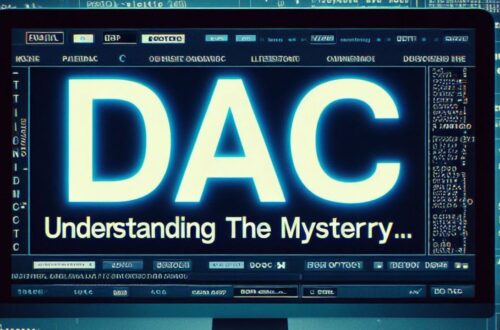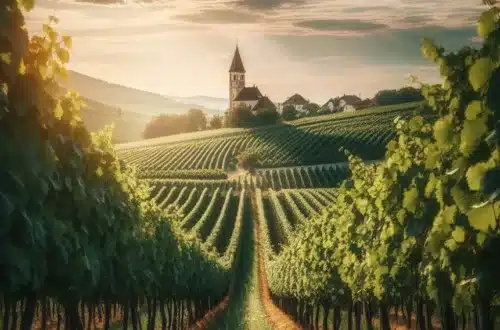
What type of wine is Ruster Ausbruch?
There is ample archaeological evidence to suggest that the Romans were producing wines in the Burgenland region of Austria in order to supply their large settlements in Carnuntum and Vienna.
The area around Neusiedlersee, a large lake shared between Austria and Hungary, became particularly famous for its sweet wines.
The town of Rust, located on the western shore of the lake, gained a reputation for producing outstanding sweet wines, particularly those labeled as “Ausbruch.”
These wines are made from grapes affected by the noble rot, which imparts a unique flavor and sweetness to the final product. Today, the region is still known for producing exceptional sweet wines, as well as a range of other varietals that reflect the unique terroir of the area.
What are the major quality levels in Austria ?
A quick reminder on the rules… Bear with me, you’ll soon understand why! (and for those who LOVE regulations, you can find the long version here!)
The German and Austrian “Prädikatswein” system offers different categories based on grape maturity and harvesting methods.
In Austria, “Prädikatswein” wines are part of Qualitätswein. The “Prädikatswein” system, which involves multiple classifications of wines with a high natural sugar content based on special harvesting and ripening methods, is a characteristic of German and Austrian regulations regarding wine production and marketing.
The term “Qualitätswein” is a traditional Austrian term and replaces the marketing denomination of the European regulation “Wein g.U” for wines with a protected designation of origin. The grapes for Qualitätswein come from the wine-growing regions. The indication of the marketing denomination “Wein mit geschützter Ursprungsbezeichnung” or “Wein g.U” is allowed.
Back to our Prädikatswein levels!
“Spätlese” wines are made from grapes that have reached maturity, with a minimum must density of 19°KMW. “Auslese” wines are produced from selected grapes, with a minimum must density of 21°KMW.
“Beerenauslese” wines are made from grapes affected by noble rot and over-ripeness, with a minimum must density of 25°KMW.
“Eiswein” wines are produced from grapes that were frozen during harvest and pressing, with a minimum must density of 25°KMW.
“Strohwein” or “Schilfwein” wines are made from mature and sugar-rich grapes stored on straw or reeds before vinification, with a minimum must density of 25°KMW.
“Trockenbeerenauslese” wines are mainly produced from botrytized and wilted grapes, with a minimum must density of 30°KMW.
Why did I bother reminding you of all that? Because : in the free city of Rust, “Trockenbeerenauslese” wines can also be marketed under the name “Ausbruch,” but only with the geographical indication “Rust”.
Ruster Ausbruch = Ausbruch from Rust
The village of Rust is located within the DAC delimitations, but its famous sweet wine, Ausbruch, remains outside of the DAC, meaning that all wines produced in the area must carry the plain Burgenland appellation.
The Ausbruch wine used to be distinct from other sweet wines, but now it is very similar to Trockenbeerenauslese (TBA).
Leading producers of Ausbruch, such as Heidi Schröck, believe that there is still a difference between the sweet wines produced in Rust and those on the eastern side of the lake. According to Schröck, the grapes for Ausbruch are grown on loamy sand with limestone and schist, which gives the wine a distinct minerality and saltiness.
In 1991, a group of committed Ausbruch producers, including Peter Schandl, Robert Wenzel, and Fritz Seiler, formed the Circle of Ruster Ausbruch to promote the wine and defend its unique style.
Where can I taste Ruster Ausbruch?
The wine region of Burgenland in Austria is home to several notable wineries producing exceptional wines, and more notably in Leithaberg.
Feiler Artinger is renowned for its sweet wines, with its most celebrated Ausbruch being the Pinot, which was intense and racy in 2016. The Welschriesling Ausbruch Essenz in 2001 and Muskat Ottonel Ausbruh in 2002 are also stunning.
Ernst Triebaumer‘s Ausbruch, blend of Chardonnay, Welschriesling, and Sauvignon Blanc is superb. But don’t stop there! Their iconic Blaufränkisch from Mariental is also a must-try, with the vineyard located north of Rust on limestone soils and vines up to 60 years old. In the dry whites, the Vogelsang Sauvignon Blanc is consistently good.
Heidi Schrök took over in 1983 and produced an excellent 1993 Ausbruch, and the winery has been a standard ever since, with a blend from Welschriesling, Weissburgunder, and Gelber Muskateller.
Robert Wenzel is a highly traditional producer of Ausbruch, adding 20% of fresh must of TBA quality to the botrytised grapes, notably fermenting the must to relatively high alcohol levels.
You can also taste Ruster Ausbruch by going to Rust of course!
You can also book a tour from Vienna and visit Rust, which is a very picturesque and romantic village! In this guided private full-day trip to Burgenland from Vienna, you’ll visit Einsenstadt and taste the famous Esterhazy cake. You’ll then head off to Rust, included in the UNESCO list for a one-hour town walk and a tasting at a local winerie.
Conclusion : What type of wine is Ruster Ausbruch?
Ruster Ausbruch is a sweet wine that is mainly produced from botrytized and wilted grapes, with a minimum must density of 30°KMW. It is a famous sweet wine from the village of Rust, which is located within the Burgenland wine region in Austria.
The grapes for Ruster Ausbruch are grown on loamy sand with limestone and schist, which gives the wine a distinct minerality and saltiness.
It is often compared to Trockenbeerenauslese (TBA) but some producers believe that there is still a difference between the sweet wines produced in Rust and those on the eastern side of the lake.







